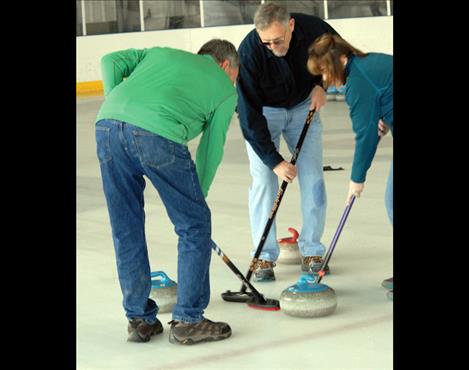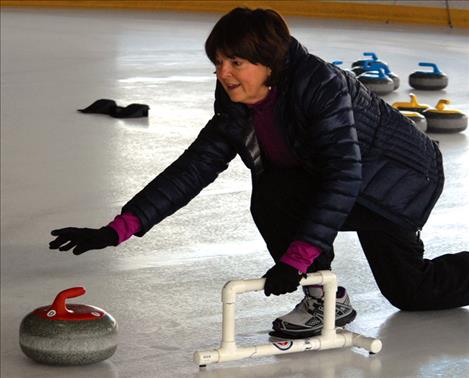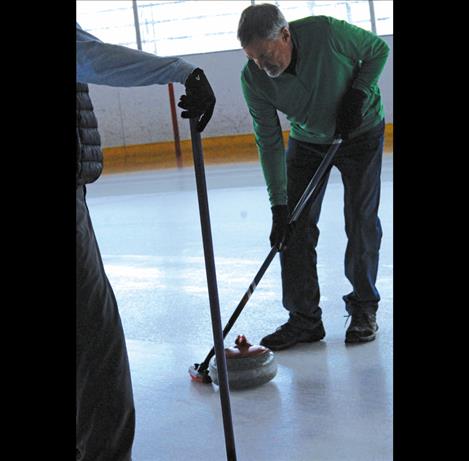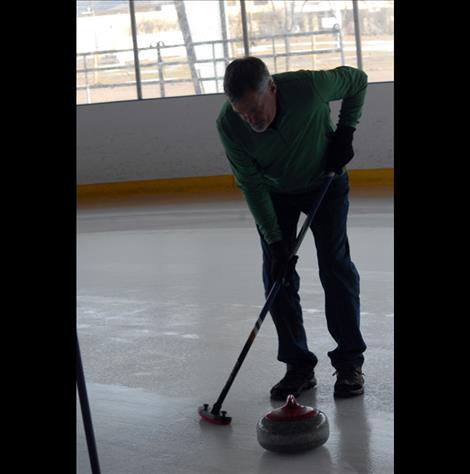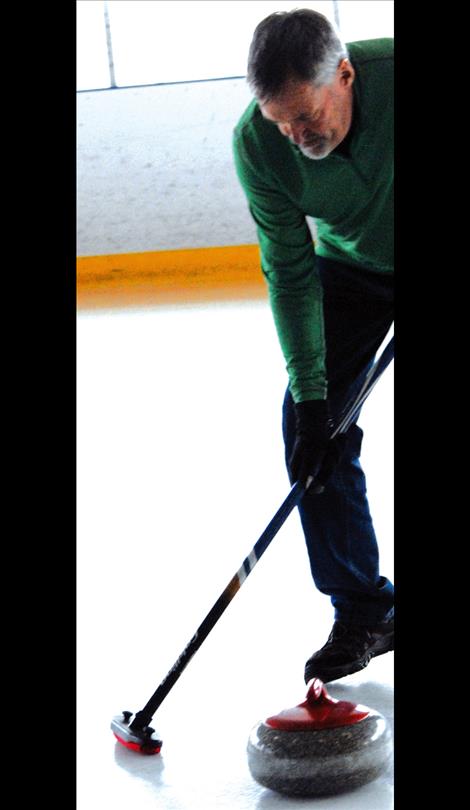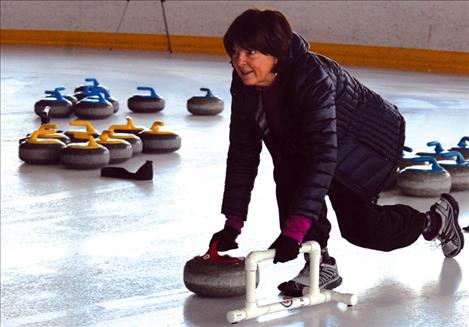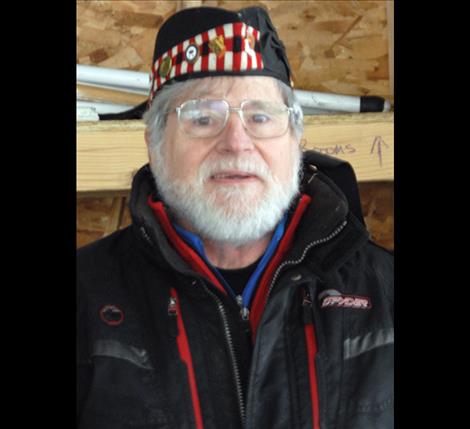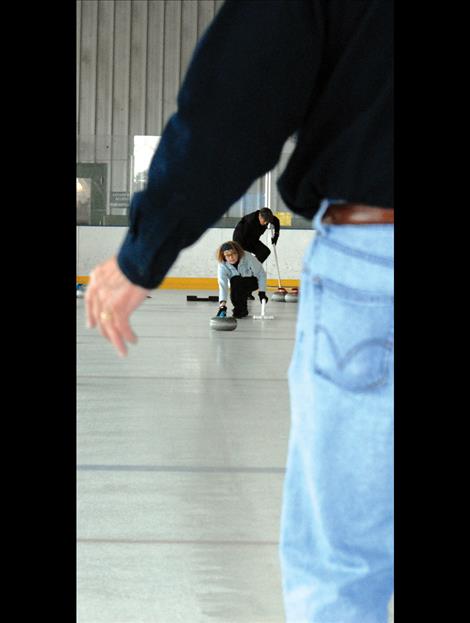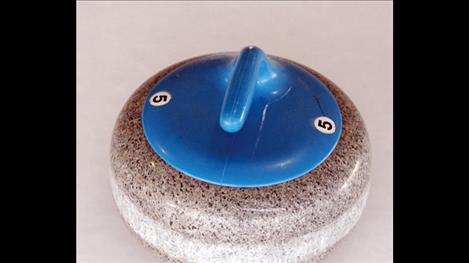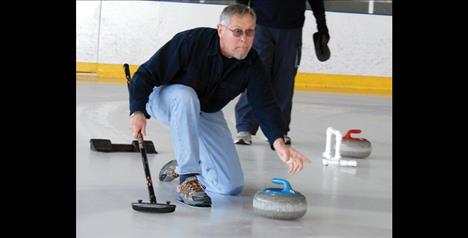Polson curlers’ strategic play earns ‘chess on ice’ nickname
Hey savvy news reader! Thanks for choosing local.
You are now reading
1 of 3 free articles.
The statement “let’s throw some rocks” sounds like kids at the lakeshore, but it’s a call for curlers to take the ice.
Polson curlers Dave and Suz Rittenhouse interested friends in the winter sport, and now a group of Polsonites makes the trip to Missoula to curl at the Glacier Ice Rink.
Called “chess on ice” for the strategy involved, curling has its own language. Basically the object of the game is to glide a stone down the ice and have it stop the closest to the center of the target. The game takes place on a “sheet;” curlers put their foot on a “hack,” pushing off to slide a granite stone into the “house,” a target 12 feet in diameter embedded in the ice; the best place to land a “rock” is on the “button,” the bulls eye of the house, according to Dave.
Ten “ends” comprise a game, which means each team slides all their stones to the other end of the sheet 10 times.
The History
Made of granite with a handle attached to the top, curling stones weigh 42 pounds, according to Dave Strobel, the curling guru at Glacier Ice Rink and past president of the Missoula Curling Association.
The granite traditionally comes from Ailsa Craig, an island off the Ayrshire coast of Scotland in the Firth of Clyde, Strobel said. The area produces two kinds of granite — blue hone and common green. Blue hone has very low water absorption, which is important since curling stones slide on the ice and get wet. It’s the toughest, too, which is necessary because curling stones repeatedly crash into each other during matches. With a stone’s 20 to 30 year lifespan, that’s a lot of collisions.
Historically, curling dates back to the 16th century. It was mentioned in a Scottish manuscript written by John McQuhin, a notary in Paisley, Scotland, in 1544. In the 16th century Flemish painter Pieter Bruegel portrayed a game similar to curling, according to the World Curling Federation website. Curling was played on frozen ponds and lochs, providing a way to get outside and have some fun during long, cold winters.
Many Scots immigrated to Canada and took the winter sport of curling with them, although most curling is now played on manicured ice. Approximately 1.6 million people in the world are curlers, with a million of those folks in Canada, Strobel said.
“All the northern tier states picked curling up from Canada,” he added.
Strobel grew up in Wisconsin and learned to curl as a child. He comes from a “curling family,” he said. His brother curls, his dad curled into his 90s and his sister also was a curler who became a curling judge, officiating at the Olympic Games.
As part of his curling attire, Strobel wears a Glengarry bonnet, Scottish headware such as the old time curlers sported.
The Polson Curlers
Polson curlers head to Missoula about once a month. For $10 a person, they can join some of the Missoula curlers and spend the morning curling.
The Rittenhouses began curling in Boise, Idaho, and enjoyed the game. When they moved to Polson, they decided to start a curling group.
“It’s an honorable game,” Dave said. “If you ‘tip the stone’ while ‘sweeping,’ you call it on yourself.”
Tipping the stone means touching the curling stone with a curling broom, a broom with a horsehair, fiberglass or carbon fiber head. The head is not like a corn broom; it’s a rectangular pad that pivots, sort of like a Swiffer mop. The broom’s purpose is to smooth the ice in front of the curling stone.
“It’s amazing how sweeping propels the stone” Dave said. “It can extend the length 10 to 15 feet.”
He said the opposing team can sweep, too, but they must wait until after the stone crosses the middle of the house.
All the curlers have a broom that they use at some time during the game.
“I’m the most amazed at the age of the people,” Polson dentist Gayle Siemers said, gesturing to curlers ranging from septuagenarians to college students.
“Curling is good for balance,” he said, so it’s great for everybody, especially older folks.
Dave is on the social committee at Mission Bay, and that’s where he met Connie and Ralph Brownell.
“Dave’s a good recruiter,” Ralph said. “He’s such a good guy.”
The Brownells decided to try curling and talked their friends Kay and Dick Luoma from Whitefish into a trip to Missoula. The Luomas used to live in Canada, and both had done some curling, particularly Kay, Brownell said.
Allen Bone thought curling would be something different to do in the winter and has really taken to the sport.
Jan Olsen turned 78 a couple of weeks ago, and she loves curling.
“One good rock, and that spurs me on,” Olsen said. “Time just flies.”
She and her partner Dennis Wolf are the elder statesmen, Dave said.
“We live here in the winter and try to do anything we can outdoors, Olsen said.
Generally the Polson group has 12 to 14 curlers.
With Flathead Lake, Lake Mary Ronan, Pablo Reservoir and Ninepipe National Wildlife Refuge, there are lots of areas where curling could be played outside, but it’s an uncertain science. It’s hard to schedule an event, Dave said, since the temperatures might warm up and melt the ice, get too cold to comfortably curl, or it might snow.
To deal with this, Dave and Suz are involved with the Mission Valley Ice Arena group proposing to build an ice arena. Hilary Lozar is president of the group.
To find out about the group, go to the Mission Valley Ice Arena Facebook site or to www.missionvalleyicearena.com.















